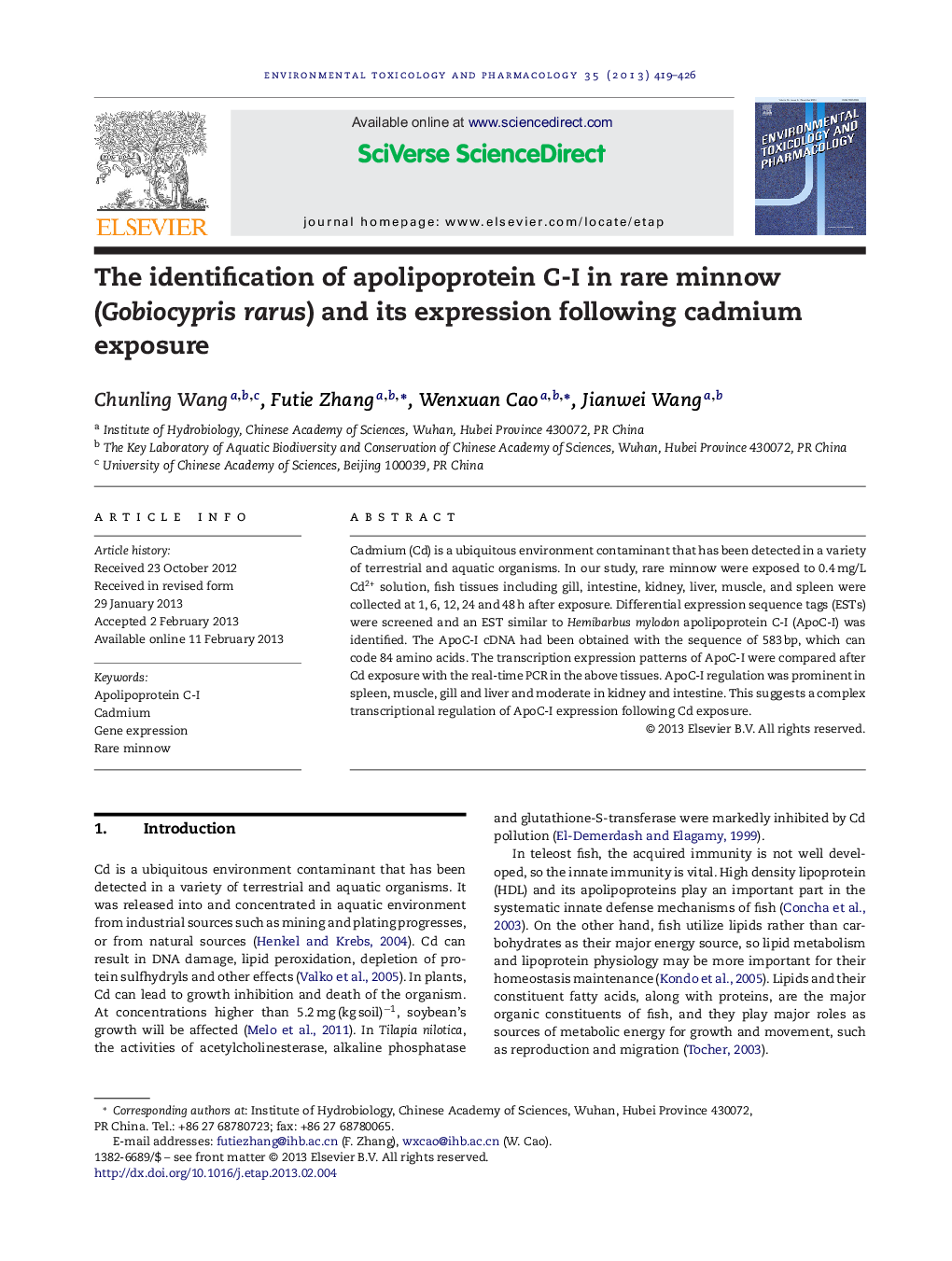| Article ID | Journal | Published Year | Pages | File Type |
|---|---|---|---|---|
| 2583179 | Environmental Toxicology and Pharmacology | 2013 | 8 Pages |
Cadmium (Cd) is a ubiquitous environment contaminant that has been detected in a variety of terrestrial and aquatic organisms. In our study, rare minnow were exposed to 0.4 mg/L Cd2+ solution, fish tissues including gill, intestine, kidney, liver, muscle, and spleen were collected at 1, 6, 12, 24 and 48 h after exposure. Differential expression sequence tags (ESTs) were screened and an EST similar to Hemibarbus mylodon apolipoprotein C-I (ApoC-I) was identified. The ApoC-I cDNA had been obtained with the sequence of 583 bp, which can code 84 amino acids. The transcription expression patterns of ApoC-I were compared after Cd exposure with the real-time PCR in the above tissues. ApoC-I regulation was prominent in spleen, muscle, gill and liver and moderate in kidney and intestine. This suggests a complex transcriptional regulation of ApoC-I expression following Cd exposure.
► We cloned the Apoc-I gene in Rare minnow. ► We tested the Apoc-I expression following Cd exposure. ► The results of this work will be useful as essential baseline data to gain a better understanding of the specific roles of ApoC-I in lipid metabolism and other related physiology of rare minnow. ► ApoC-I can be powerful biomarker for the detection of toxic effect at acute level.
